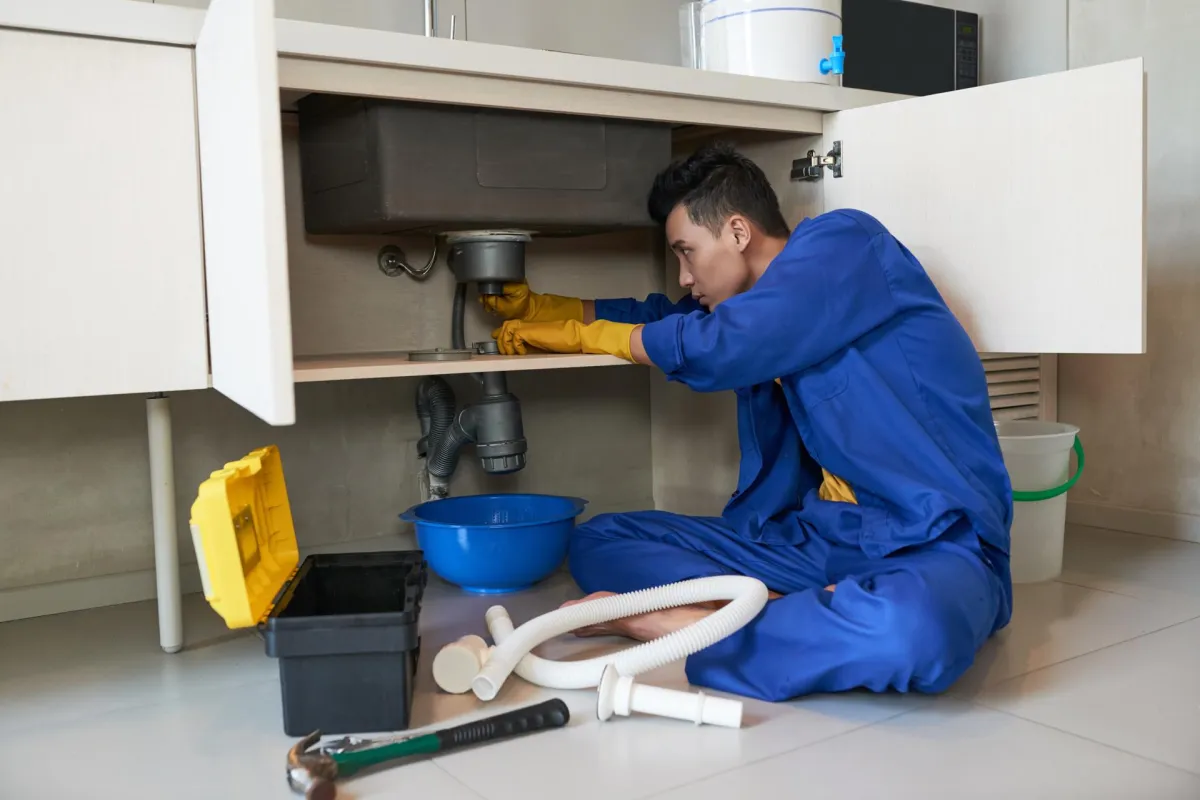
What Hidden Plumbing Problems Cause Costly Repairs in Edmonton Homes
Introduction
Hidden plumbing problems are like ticking time-bombs in your home. They operate quietly — behind walls, beneath floors, or buried underground — and by the time you notice them, the damage is often extensive and expensive. In Edmonton, where cold winters and seasonal shifts add extra stress to plumbing systems, spotting these issues early is even more critical. This guide will walk you through the most common hidden plumbing issues, how to recognise them, and what you can do to stop small problems from turning into major repairs.
Recognising the Hidden Issues
Many homeowners assume a slow drain or weak shower spray is just a minor annoyance. But these symptoms can signal deeper issues that could cost thousands if ignored.
Slow Draining Sinks and Showers
The problem: Hair, soap scum or grease builds inside pipes, narrowing water flow until drainage becomes sluggish.
Why it matters: Untreated, the blockage worsens, pressure builds, and pipes can crack or burst.
Example scenario: You use a chemical cleaner to fix a slow sink, but the real issue is corrosion deeper in the line.
Constantly Running Toilets
The problem: A faulty flapper or mis-adjusted float allows water to leak continuously from tank to bowl.
Why it matters: This can waste up to hundreds of litres per day and strain the rest of the plumbing system.
Look for: Water flowing into the bowl when you haven’t flushed, or a faint hissing sound near the tank.
Low Water Pressure
The problem: Weak flows often mean pipe corrosion, mineral buildup or even hidden leaks in the main line.
Why it matters: Poor pressure doesn’t just affect convenience — it indicates underlying wear that can lead to full pipe failure.
Tip: Check whether low pressure is across the whole house or just one fixture; whole-house issues are more serious.
Leaking Pipe Joints
The problem: Joints and connections are common failure points; even a few drips can lead to big problems.
Why it matters: Moisture from these leaks can rot drywall, damage flooring, support mould growth and degrade structural elements.
Investigative tip: Look for soft spots in walls/ceilings, or small damp areas on floors near plumbing lines.
More Silent Threats: Corrosion, Slabs & Underground Lines
Beyond the obvious symptoms, some plumbing failures hide even deeper. These require attention before they escalate.
Pipe Corrosion and Deterioration
Older homes often feature galvanized steel or copper pipes which degrade over time. Internal rust, chemical reactions, or high-pressure water can weaken pipe walls until leaks or bursts occur.
Slab Leaks and Underground Failures
Slab leaks occur under concrete foundations — hard to detect until serious damage develops.
Underground lines can crack due to shifting ground, tree-root intrusion or freeze/thaw cycles.
Both types often result in massive repair bills because they involve excavation or breaking through concrete.
Preventive Steps to Avoid Costly Repairs
Prevention is far cheaper than repair. Use these actionable steps to minimise risk and protect your Edmonton home.
Inspect Regularly
Feel around for damp walls, warped flooring, or unusual odours.
Monitor your water bill—unexpected spikes often signal hidden leaks.
Check under sinks and behind toilets for moisture or mildew.
Maintain Smartly
Keep water pressure under ~80 psi with a regulator if needed.
Replace old rubber hoses with modern braided steel versions.
Disconnect outdoor hoses and insulate exterior lines before winter.
Schedule Professional Checks
Plan for a full plumbing inspection at least once a year, more often if your home is older or has known issues. A plumber can use advanced tools (camera inspection, moisture sensors) to catch hidden problems early.
FAQs
What’s the most common hidden plumbing problem?
Slow drains and leaking joints top the list—they start small but grow big if ignored.
How much can a hidden leak cost me?
Minor leaks may cost a few hundred dollars to fix, but ignoring them can lead to mould, structural damage or pipe bursts costing thousands. Metro Heating & Cooling+1
Can I detect hidden leaks myself?
Yes — by monitoring water bills, checking for damp areas, using the water-meter test (turn off all water, wait 30 minutes, check meter change). But professional tools catch what you can’t see.
How does Edmonton’s climate affect hidden plumbing problems?
Freezing temperatures, thawing soil, and seasonal moisture shifts increase risks of pipe contraction/expansion, slab movement and underground line stress.
When should I call a plumber immediately?
Call when you notice persistent slow drains, unexplained water bills, soft walls/flooring, or water pooling where it shouldn’t be. These often signal serious hidden damage.
Conclusion
Hidden plumbing problems aren’t just nuisances — they are silent risks that can evolve into major headaches and huge repair bills. In Edmonton homes especially, with cold weather and older plumbing systems, the stakes are high. But the good news is this: with awareness, proactive checks, and timely maintenance, most of these issues are avoidable. Stay alert, invest in prevention now, and your future self (and wallet) will thank you.